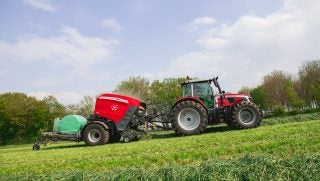In a case dating back to 2019, in which Syngenta sued Atticus LLC over allegations of patent infringement related to the manufacture of the fungicide azoxystrobin, Syngenta announced Wednesday afternoon that the two companies have settled all claims and counterclaims.
Details of the settlement agreement are confidential, but according to a statement from Syngenta, “Both parties agree that valid intellectual property rights are important to the industry and should be respected. Atticus will continue to offer for sale its azoxystrobin products.”
Azoxystrobin was first approved by the Environmental Protection Agency in 1997. The original compound patents covering azoxystrobin expired in 2014, Atticus said. And according to Atticus, which is the 12th technical registrant of azoxystrobin and is now the leading importer of generic azoxystrobin products, the issue centered on two Syngenta patents, protecting very specific methods of manufacturing azoxystrobin.
The original complaint, filed in the U.S. District Court for the Eastern District of North Carolina, alleged, among other things, that Atticus’ Acadia 2 SC, Acadia ESQ, Aquila XL, Artavia 2 SC, and Artavia Xcel products each infringed on those Syngenta patents.
Syngenta said it has invested significant resources in researching, developing, and ultimately commercializing azoxystrobin, a breakthrough fungicidal chemical, which effectively controls a variety of plant diseases and enhances the yield of crops, including cereals — such as wheat and barley, fruits, vegetables, bananas, rice, soybeans, corn, turf, and ornamentals. Syngenta has marketed a number of azoxystrobin products, including those under the trade names Abound, Heritage, Quadris, and Quilt.
In the years prior to the Atticus lawsuit, Syngenta spent significant time defending its patent in court, for example, winning multiple hearings over azoxystrobin infringement against agrochemical manufacturer Willowood.
The stringent regulatory approval process and high cost of research and development for new crop protection chemistries require a major commitment: the average time to bring a new crop protection product to market is up to 11 years and can cost $286 million.


